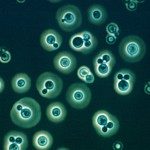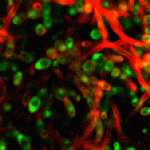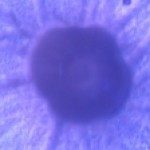Lien vers Pubmed [PMID] – 18001349
Mol. Microbiol. 2007 Dec;66(5):1256-75
Completion of the yeast cell cycle involves extensive remodelling of the cell wall upon separation of mother and daughter cells. We have studied two members of the ascomycete-specific SUN gene family in Candida albicans. Inactivation of SUN41 yields defects in cell separation and hyphal elongation while inactivation of SUN42 results in minor phenotypic alterations. Simultaneous inactivation of SUN41 and SUN42 is synthetically lethal due to lysis of mother cells after septation. Electronic microscopy reveals cell wall defects mainly localized in the region surrounding the septa. This phenotype is osmoremediable and the conditional double mutants show increased sensitivity to cell wall or cell membrane perturbing agents. The essential function shared by Sun41p and Sun42p is conserved among yeasts because UTH1, a Saccharomyces cerevisiae SUN gene, suppresses the lethality of SUN41 and SUN42 conditional mutants. Investigation of functional genomic data obtained in S. cerevisiae reveals links between members of the SUN gene family and the RAM pathway regulating cell wall-degrading enzymes specifically involved during cell separation. Thus, the main function of ascomycetous Sun proteins appears linked to cell wall remodelling, with a probable role in counter-balancing cell wall degradation to avoid cell lysis upon cell separation.





